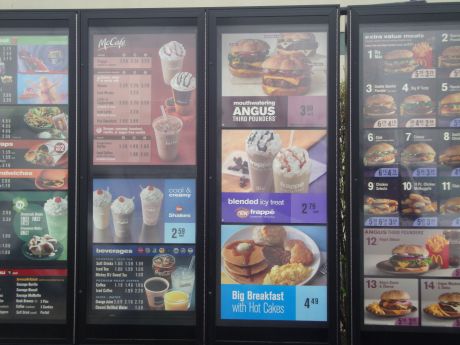
By Julia Angelotti, Reporter
Seven hundred and forty calories–that’s how many calories are in one McDonald’s Double Quarter Pounder with Cheese.
However, unless people scour their website for the nutritional facts, no one would never know that this burger with cheese contains nearly 40 percent of the suggested daily calorie consumption of 2,000 calories.
McDonald’s isn’t alone in this hide-and-seek game of calorie information: the majority of fast food restuarants make it nearly impossible to uncover calorie content.
While school nurses Barb Giese and Joan Husk said theyve never searched for calorie information at a restaurant, theyve been seeing calorie content labels popping up more frequently.
By 2011, all fast-food chains with 20 or more restaurants will be required by federal law to post calorie content on menu and drive-thru signs. The new calorie labeling law is part of the health care reform bill recently passed by Congress.
Seventeen states have passed laws requring calorie displays. However, this new national law will override all local laws.
This means that chains such as Burger King, Wendy’s, Starbucks and McDonald’s will all be required to post the content of their big-sellers, like the 670-calorie Whopper or the 380-calorie caramel Frappucino.
Senior Joscelyn suggett said calorie content information won’t necessarily change her diet habits as long as the food tastes good.
However, technology teacher Tom Hanlon said he thinks people will at least be aware of what they’re eating.
People will be more aware of what they are putting in their bodies, he said. It’s a step in the right direction.
However, not everyone at KHS agrees with the new federal law.
It’s a little ridiculous, freshman Emma Bradford said. People will eat what they want.
However, a study done by Stanford University found that when the New York Health Department implemented similar calorie display laws, consumers reduced their purchases by about 15 calories–a six percent reduction.
The new laws addressed in the health care reform bill resemble the plan developed by the New York Health Department, but there are some notable differences.
The New York guidelines require chains with at least 15 restaurants to display calorie content, whereas this new federal law will apply to any chain with 20 or more restaurants.
The law will also apply to vending machines. That means the 440 calories in a king-size Snickers bar will be posted for all to see.
Husk said she doesnt think people will change their vending machine habits.
Vending machines are sometimes used for cravings, she said. They’re not a healthy meal.
Contributing: Jessica Corbett






